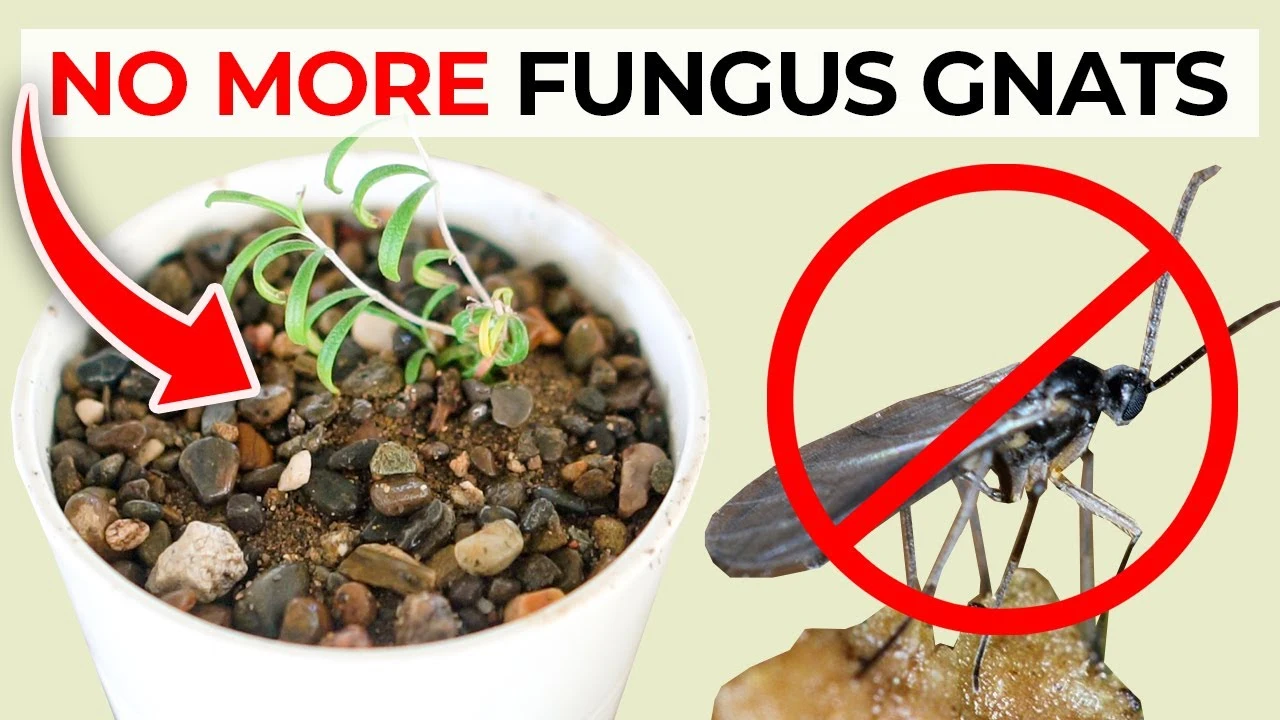How to Get Rid of Gnats? Gnats are tiny, pesky insects that can quickly become a major annoyance when they invade your home, garden, or office space. These small flies, often mistaken for fruit flies or mosquitoes, can be a real challenge to eliminate once they establish themselves. Fortunately, with the right knowledge and strategies, you can effectively get rid of gnats and prevent them from returning. This guide provides a detailed, step-by-step approach to identifying, eliminating, and preventing gnat infestations.
What Are Gnats?
Gnats are small, flying insects that belong to several families within the order Diptera. While the term “gnat” is often used generically, it actually refers to a variety of species that share similar characteristics. The most common types of gnats you may encounter include:
- Fungus Gnats: These are the most common gnats found indoors, particularly around houseplants. They are attracted to moist soil where they lay their eggs. Fungus gnats are small, black flies with long legs and a preference for decaying organic material.
- Fruit Flies: These tiny, tan-colored gnats are often found hovering around ripened fruits, vegetables, and other fermenting organic matter. They are known for their rapid reproduction cycle, which can make them challenging to control.
- Drain Flies: Also known as moth flies, drain flies are small, fuzzy gnats that are commonly found around drains, sewers, and other areas with standing water. They are often mistaken for moths due to their appearance.
Why Gnats Invade Your Space
Understanding why gnats are attracted to your home or garden is the first step in eliminating them. Here are the most common reasons for a gnat infestation:
- Moisture: Gnats are drawn to moisture-rich environments. Overwatered plants, leaky pipes, damp basements, and wet towels can all serve as breeding grounds for these insects.
- Food Sources: Gnats are attracted to decaying organic matter, which includes overripe fruits, vegetables, and even the residue in your trash can. They also feed on the fungi and algae that thrive in moist conditions.
- Unclean Areas: Unsanitary conditions, such as dirty dishes left out for too long, open garbage bins, and unclean drains, can provide an ideal environment for gnats to thrive.
How to Get Rid of Gnats: A Step-by-Step Approach
Getting rid of gnats requires a multifaceted approach. Here’s how you can tackle the problem effectively:
1. Identify the Source of the Infestation
The first step in dealing with gnats is to identify where they are coming from. This will allow you to target your efforts more effectively. Common sources include:
- Houseplants: If you notice gnats flying around your potted plants, it’s likely you have a fungus gnat problem. Overwatering is usually the culprit.
- Kitchen: If gnats are buzzing around your kitchen, check for overripe fruits, open garbage bins, or dirty dishes. Fruit flies are typically responsible for infestations in the kitchen.
- Bathroom: If you see gnats in your bathroom, they may be drain flies. Check your drains and any areas with standing water.
2. Remove Food and Breeding Sources
Once you’ve identified the source, it’s time to remove anything that might be attracting gnats.
- Dispose of Overripe Fruits and Vegetables: Regularly inspect and remove any fruits or vegetables that are starting to overripe. Store fresh produce in the refrigerator or in sealed containers.
- Keep Trash Cans Covered: Ensure your trash cans have tight-fitting lids and are emptied regularly. Consider using a trash bag with a built-in odor control feature.
- Clean Kitchen Surfaces: Wipe down countertops, sinks, and stovetops daily to remove any food residue. Pay special attention to areas where crumbs and spills may accumulate.
3. Address Moisture Issues
Since gnats thrive in moist environments, controlling moisture levels is crucial.
- Water Plants Properly: Avoid overwatering your houseplants. Let the soil dry out between waterings, especially the top inch of the soil. If you have fungus gnats, consider repotting the plant with fresh soil.
- Fix Leaks: Repair any leaky faucets, pipes, or appliances immediately. Even minor leaks can create a breeding ground for gnats.
- Use a Dehumidifier: In areas prone to dampness, such as basements, using a dehumidifier can help reduce moisture and make the environment less hospitable to gnats.
4. Set Up Gnat Traps
Trapping gnats is an effective way to reduce their numbers quickly. There are several types of traps you can use:
- Apple Cider Vinegar Trap: This is one of the most effective and widely used gnat traps. Fill a small bowl or container with apple cider vinegar and add a few drops of dish soap. The vinegar attracts the gnats, while the dish soap breaks the surface tension, causing the gnats to drown.
- Wine Trap: If you have leftover wine, you can use it as a gnat trap. Pour the wine into a container and cover it with plastic wrap. Poke small holes in the wrap, allowing the gnats to enter but not escape.
- Sticky Traps: Yellow sticky traps are particularly effective for capturing fungus gnats around houseplants. Place the traps close to the infested plants, and the gnats will be attracted to the bright yellow color and become stuck.
5. Use Natural Repellents and Remedies
Natural repellents can help deter gnats without the use of harsh chemicals.
- Essential Oils: Peppermint, tea tree, eucalyptus, and lavender oils are all known to repel gnats. You can make a simple spray by mixing a few drops of essential oil with water and spraying it around your home, especially in areas where gnats are common.
- Neem Oil: Neem oil is a natural insecticide that can be effective against fungus gnats. Mix neem oil with water and apply it to the soil of infested plants to kill gnat larvae.
- Hydrogen Peroxide Solution: For fungus gnats, you can create a hydrogen peroxide solution by mixing one part hydrogen peroxide with four parts water. Water your plants with this solution to kill the larvae without harming the plants.
6. Consider Chemical Solutions for Severe Infestations
If natural methods don’t seem to be enough, you may need to resort to chemical solutions.
- Insecticides: Use an insecticide that is specifically labeled for gnats. These products can be found in sprays, granules, or liquid concentrates. Always follow the manufacturer’s instructions and use the insecticide only as directed.
- Foggers: For particularly severe infestations, a fogger or bug bomb might be necessary. These products release a fine mist of insecticide that can penetrate hard-to-reach areas. However, they should be used with caution, especially around pets and children.
7. Prevent Future Gnat Infestations
After you’ve eliminated the current gnat problem, take steps to prevent them from returning.
- Maintain Cleanliness: Regularly clean your home, especially the kitchen and bathroom. Promptly wipe up spills, take out the trash, and wash dishes.
- Proper Food Storage: Keep fruits, vegetables, and other perishable items stored in the refrigerator or in sealed containers.
- Monitor Plant Care: Avoid overwatering plants, and consider adding a layer of sand to the top of the soil. Sand dries quickly and can deter gnats from laying eggs in the soil.
- Regularly Inspect Drains: Keep an eye on drains and other areas prone to moisture. Clean drains regularly with a mixture of baking soda and vinegar, followed by boiling water.
Special Considerations for Outdoor Gnat Control
If you’re dealing with gnats outside, such as in your garden or around your patio, consider these additional tips:
- Eliminate Standing Water: Empty any containers that collect water, such as bird baths, plant saucers, or clogged gutters. Standing water is a prime breeding ground for gnats and mosquitoes.
- Use Outdoor Gnat Traps: Similar to indoor traps, outdoor gnat traps can be used to capture and kill gnats. Commercial traps designed for outdoor use are available, or you can use homemade versions like the apple cider vinegar trap.
- Plant Gnat-Repelling Plants: Some plants naturally repel gnats and other insects. Consider planting lavender, marigolds, or citronella around your garden or patio to keep gnats at bay.
- Apply Insecticidal Soap: Insecticidal soap can be used on outdoor plants to kill gnats and other pests. Apply it directly to the affected plants, following the instructions on the product label.
Frequently Asked Questions (FAQs) About Gnats
- Q: What is the fastest way to get rid of gnats?
- A: The fastest way to get rid of gnats is to eliminate their food sources, reduce moisture, and set up traps. Combining these methods will quickly reduce the gnat population.
- Q: Are gnats harmful to humans or pets?
- A: While gnats are generally not harmful, they can be a nuisance. In some cases, gnat bites can cause skin irritation, and some species may transmit diseases to plants.
- Q: Can gnats infest my home through open windows or doors?
- A: Yes, gnats can enter your home through open windows or doors, especially if there are food sources or moisture inside. Installing screens and keeping windows closed can help prevent this.
- Q: How long does it take to get rid of gnats?
- A: The time it takes to get rid of gnats depends on the severity of the infestation and the methods used. In most cases, it may take a few days to a week to eliminate them completely.
- Q: Do gnats go away on their own?
- A: Gnats may eventually go away on their own if their food and moisture sources are eliminated. However, taking proactive steps to address the infestation will speed up the process.
Conclusion
Dealing with gnats can be frustrating, but with the right approach, you can effectively eliminate them and prevent future infestations. By understanding what attracts gnats, removing their food and breeding sources, and using a combination of natural and chemical methods, you can reclaim your space from these pesky insects. Remember, maintaining cleanliness, proper plant care, and moisture control are key to keeping gnats at bay. With persistence and the strategies outlined in this guide, you’ll be able to enjoy a gnat-free home and garden.


